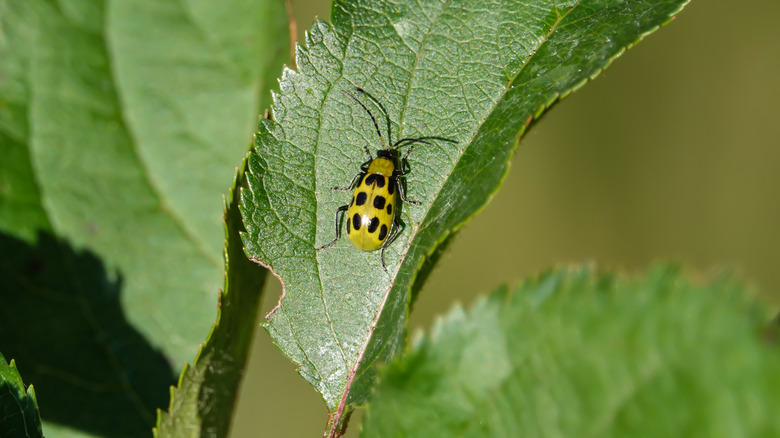While we typically think of pumpkins as a fall vegetable, they can actually take quite a bit of year-round planning and gardening effort. Pumpkins are generally planted in spring or early summer to give them plenty of time to ripen before the peak harvesting season in fall. Waiting patiently through the long summer months can be difficult, but it all feels worth it when you pluck that first big, healthy pumpkin from its vine in mid-October. Unfortunately, all that time waiting could be wasted if your beautiful pumpkins are plagued by pests.
One of the biggest pumpkin predators is the beetle. Specifically, striped cucumber beetles, spotted cucumber beetles, and red pumpkin beetles, in addition to squash bugs, are pests to look out for. These beetles and other creepy crawlies can harm your pumpkin plants by chewing through leaves and stems, sapping hydration and nutrients, scarring the fruit, and laying egg masses which quickly transform into more bugs. Squash bugs and cucumber beetles can be especially troublesome because they also have the potential to transmit bacterial diseases between plants. Luckily, you can keep their presence under control with a good insecticide.
Banish beetles with a good insecticide

Pesticide treatments are generally the best course of action when you’re battling to get cucumber beetles, pumpkin beetles, and squash bugs out of your garden. Carbaryl is one of the best chemicals for treating all sorts of beetles, eggs, and nymphs on pumpkins. Luckily, this effective chemical is used in many commercial insecticide brands, making it easy to find at a local gardening center and apply to your plants. Plus, Carbaryl and many other strong commercial insecticides will provide some protection against other common pumpkin pests like melon worms, squash vine borers, snails, slugs, and aphids.
If you’re determined to grow your pumpkin plants organically, it can be a little tricky to remove beetles and other pests without an insecticide. Some organic methods worth trying may include applying wood ash and lime to the plants or spraying the leaves with watered-down neem oil (via Garden.eco). Alternatively, you can pick the insects and their eggs off the pumpkin plants. For squash bugs specifically, it’s better to target the eggs and hatchlings with a strong insecticide, than frequently pick and destroy any adult insects by hand.
Proper planting techniques can help, too
Pumpkin plants are at their most vulnerable to beetles while they are still young; a beetle can zap a pumpkin seedling in the blink of an eye. To give your baby pumpkin plants the best chance of survival against pests, consider starting the seeds indoors about a month after the last frost of the season, then transplant them to the garden once the seedlings feel strong and average temperatures are above 70 degrees.
When it comes to cucumber beetles, specifically, prevention is the best cure. Cucumber beetles aren’t afraid to dig into the pumpkins themselves, which can leave you with some scarred and unappealing fruits. Grow your pumpkins in a covered row garden, add mulch around the plant, and keep it off the ground and out of reach as much as possible. Whether you decide to use an insecticide or not, be sure to till the garden thoroughly after harvesting. This will eliminate hibernating beetle adults and keep them from coming back next year. For stubborn red pumpkin beetles, you’ll likely need to till and burn out all your pumpkin growth at the end of the season, removing their food source. Hopefully, the fresh start will bring better luck next year!